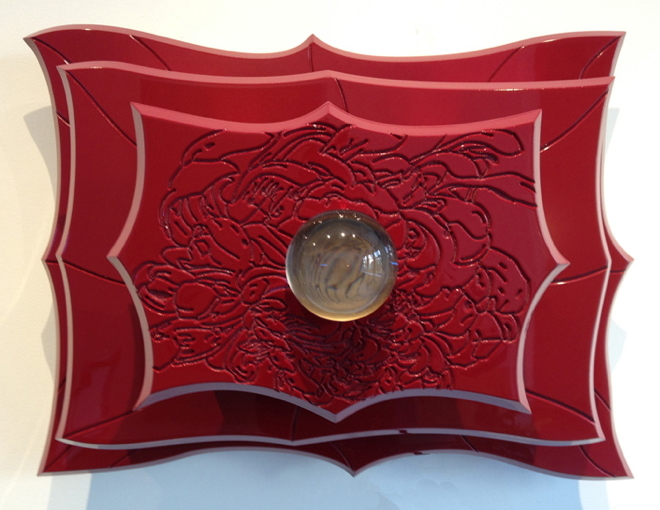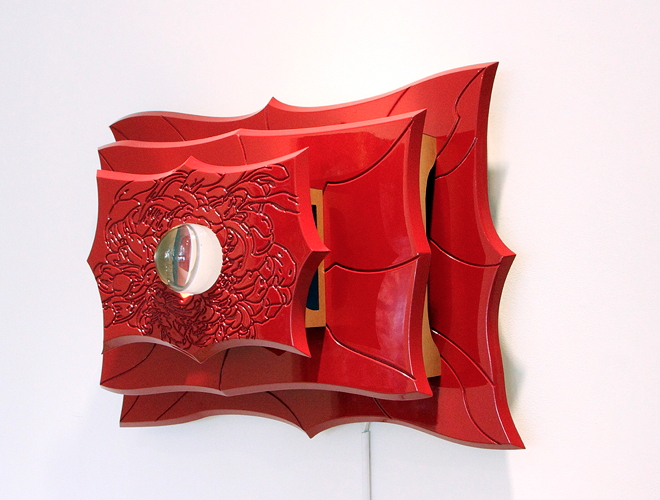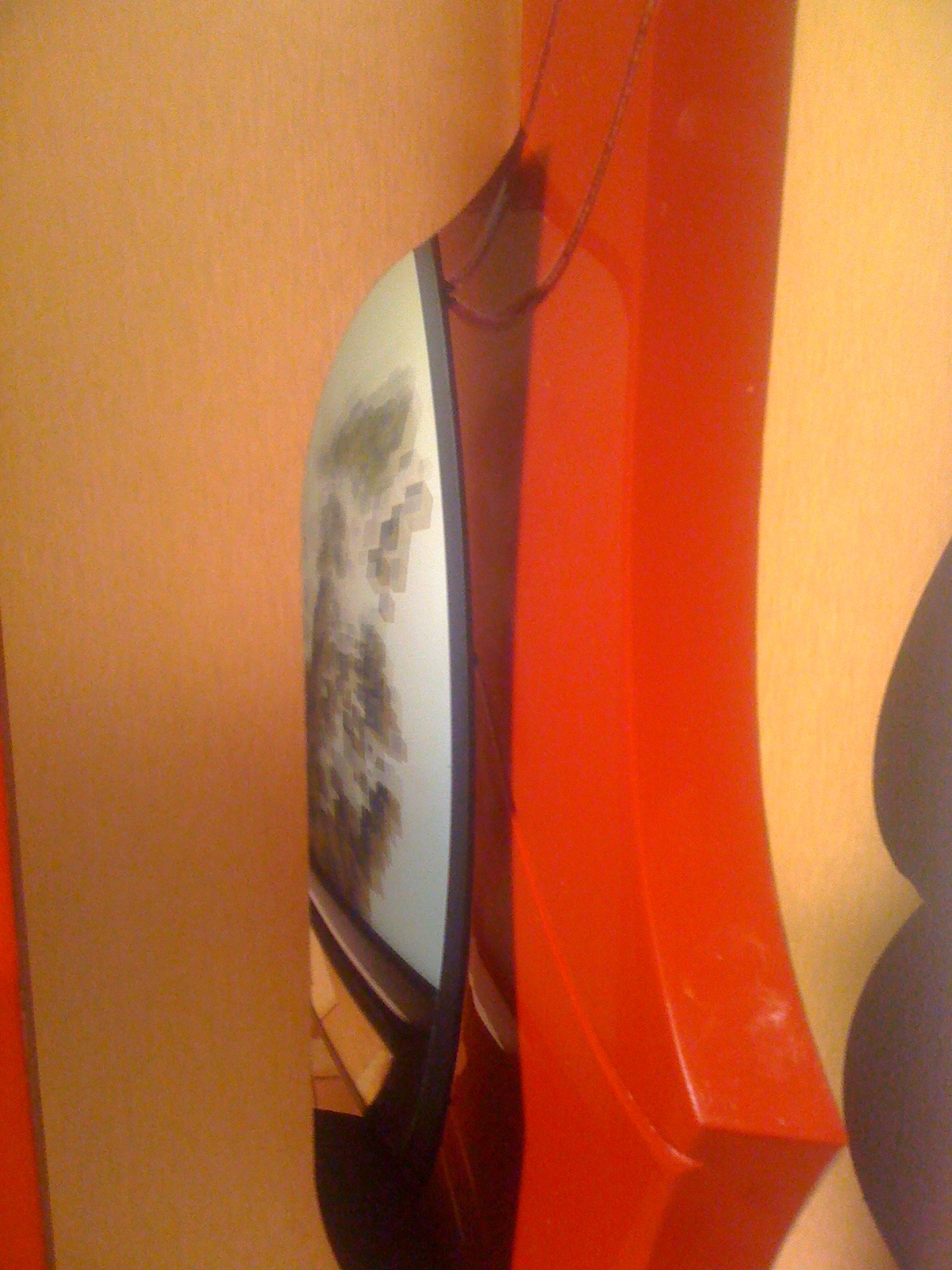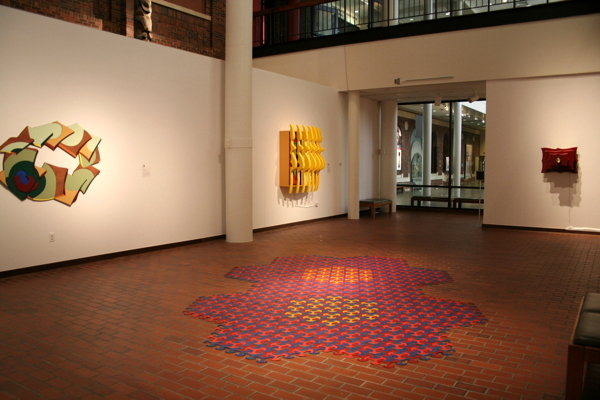The Secret of the Golden Flower, 2012
Software, LCD Screen, Metal & Plastic Laminate, Enamel & Latex Paint, Wall Paper, Acrylic Plastic, Magnifying Dome
22 x 29 x 14.5 inches
Edition of 3
|
Nam June Paik transformed TV screens into sculptural elements. His work influenced (and gave permission to me for) the elaborate physical construction of this piece.
Conceptually there are parallels to be made with Paik's important work "TV Buddah", where a statue of a Buddah contemplates his own live video image.
In the middle layer of "The Secret of the Golden Flower", the screen and mirror face each other forming a similar self-reflection.
Both works make use of the screen as a medium for meditation.
This piece hides the ever changing computer image from direct view, the object of meditation can never be directly perceived, and our desire to see the whole picture can never be fully satisfied.
The software is simple to describe but impossible to predict. There is only one rule: return to the center. When we meditate we sit quietly, centered, and if a thought arises we let it pass and return our mind to the center.
The software starts with a mass of boxes, a metaphor for the restless mind filled with thoughts. As each box moves, the position of the center is changed, and thus starts an endlessly shifting movement, sometimes calm and often swarming, flocking and chaotic.
A chrysanthemum is pictured on the top layers. The word chrysanthemum means "gold flower".
The book that lends its name to the title of this piece, "The Secret of the Golden Flower" is an ancient Taoist text. It describes a meditation technique called "turning the light around". This technique teaches the process of self-reflection which is represented metaphorically by the mirror/screen in the middle layer of the piece.
The translation of the text, "The Secret of the Golden Flower'", by Richard Wilhelm, contains a very well known and influential commentary by C. G. Jung in which Jung attempts to reconcile western and eastern ideas about inner meditative practices. The piece also tries to bring together opposites, not so much geographic opposites, but different spiritually defined approaches to the same unknowable center.
|
|
2012: |
Digital Paintings, Louisiana Art & Science Museum, Baton Rouge, LA
|
2012: |
Colliding Complexities: Extreme Feast of the New York - New Aesthetic, Frederieke Taylor and Storefront Bushwick, Brooklyn, NY
|




